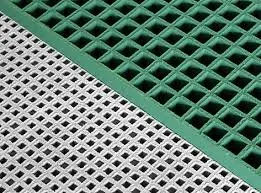
-
 Afrikaans
Afrikaans -
 Albanian
Albanian -
 Amharic
Amharic -
 Arabic
Arabic -
 Armenian
Armenian -
 Azerbaijani
Azerbaijani -
 Basque
Basque -
 Belarusian
Belarusian -
 Bengali
Bengali -
 Bosnian
Bosnian -
 Bulgarian
Bulgarian -
 Catalan
Catalan -
 Cebuano
Cebuano -
 China
China -
 China (Taiwan)
China (Taiwan) -
 Corsican
Corsican -
 Croatian
Croatian -
 Czech
Czech -
 Danish
Danish -
 Dutch
Dutch -
 English
English -
 Esperanto
Esperanto -
 Estonian
Estonian -
 Finnish
Finnish -
 French
French -
 Frisian
Frisian -
 Galician
Galician -
 Georgian
Georgian -
 German
German -
 Greek
Greek -
 Gujarati
Gujarati -
 Haitian Creole
Haitian Creole -
 hausa
hausa -
 hawaiian
hawaiian -
 Hebrew
Hebrew -
 Hindi
Hindi -
 Miao
Miao -
 Hungarian
Hungarian -
 Icelandic
Icelandic -
 igbo
igbo -
 Indonesian
Indonesian -
 irish
irish -
 Italian
Italian -
 Japanese
Japanese -
 Javanese
Javanese -
 Kannada
Kannada -
 kazakh
kazakh -
 Khmer
Khmer -
 Rwandese
Rwandese -
 Korean
Korean -
 Kurdish
Kurdish -
 Kyrgyz
Kyrgyz -
 Lao
Lao -
 Latin
Latin -
 Latvian
Latvian -
 Lithuanian
Lithuanian -
 Luxembourgish
Luxembourgish -
 Macedonian
Macedonian -
 Malgashi
Malgashi -
 Malay
Malay -
 Malayalam
Malayalam -
 Maltese
Maltese -
 Maori
Maori -
 Marathi
Marathi -
 Mongolian
Mongolian -
 Myanmar
Myanmar -
 Nepali
Nepali -
 Norwegian
Norwegian -
 Norwegian
Norwegian -
 Occitan
Occitan -
 Pashto
Pashto -
 Persian
Persian -
 Polish
Polish -
 Portuguese
Portuguese -
 Punjabi
Punjabi -
 Romanian
Romanian -
 Russian
Russian -
 Samoan
Samoan -
 Scottish Gaelic
Scottish Gaelic -
 Serbian
Serbian -
 Sesotho
Sesotho -
 Shona
Shona -
 Sindhi
Sindhi -
 Sinhala
Sinhala -
 Slovak
Slovak -
 Slovenian
Slovenian -
 Somali
Somali -
 Spanish
Spanish -
 Sundanese
Sundanese -
 Swahili
Swahili -
 Swedish
Swedish -
 Tagalog
Tagalog -
 Tajik
Tajik -
 Tamil
Tamil -
 Tatar
Tatar -
 Telugu
Telugu -
 Thai
Thai -
 Turkish
Turkish -
 Turkmen
Turkmen -
 Ukrainian
Ukrainian -
 Urdu
Urdu -
 Uighur
Uighur -
 Uzbek
Uzbek -
 Vietnamese
Vietnamese -
 Welsh
Welsh -
 Bantu
Bantu -
 Yiddish
Yiddish -
 Yoruba
Yoruba -
 Zulu
Zulu
Exploring the Dynamics of FRP Transition in Modern Applications
Understanding FRP Transition A Shift Towards Resilience and Performance
In recent years, the acronym FRP, which stands for Fiber Reinforced Polymer, has gained significant attention in various fields, including construction, automotive, and aerospace industries. FRP materials are recognized for their unique properties, offering alternatives to traditional materials such as steel and concrete. The transition towards using FRP technology marks a pivotal point in enhancing performance and resilience across multiple sectors.
What is FRP?
Fiber Reinforced Polymers are composite materials consisting of a polymer matrix reinforced with fibers. These fibers can be of various types, including glass, carbon, aramid, and natural fibers. The combination of these materials results in a product that is lightweight yet incredibly strong, possessing excellent resistance to environmental factors such as corrosion, temperature, and UV radiation. As a result, FRP has become a preferred choice in applications where durability and longevity are paramount.
Advantages of FRP Materials
1. Lightweight and High Strength One of the primary advantages of FRP is its high strength-to-weight ratio. This characteristic is particularly beneficial in the aerospace and automotive industries, where reducing weight can lead to improved fuel efficiency and performance.
2. Corrosion Resistance Unlike traditional materials, FRP does not rust or corrode, making it suitable for applications in harsh conditions, such as marine environments and chemical processing facilities. This resistance extends the lifespan of structures and components, reducing maintenance costs.
3. Flexibility in Design The versatility of FRP allows for innovative design possibilities. Engineers can create complex shapes and forms that would be difficult or impossible to achieve with traditional materials. This flexibility is vital in both architectural and engineering applications, enabling the creation of unique and efficient designs.
frp transition

4. Thermal and Electrical Insulation FRP materials often possess excellent thermal and electrical insulating properties. This quality makes them suitable for applications in electrical enclosures and components, where safety and efficiency are critical.
The Transition to FRP Challenges and Considerations
Despite its many advantages, the transition to FRP materials is not without challenges. High manufacturing and material costs have been significant barriers, particularly for industries accustomed to conventional materials with established supply chains. Additionally, the knowledge gap regarding the appropriate application and handling of FRP composites can deter widespread adoption.
To facilitate the transition, industry stakeholders must invest in education and training programs for engineers, architects, and construction professionals. These programs should focus on the proper design, production, and maintenance of FRP materials. Moreover, research and development initiatives aimed at reducing costs and increasing production efficiency will be crucial in making FRP a mainstream choice.
Future Prospects for FRP Transition
Looking ahead, the potential of FRP materials is vast. As sustainability becomes a central focus in engineering and construction, the demand for materials like FRP that offer greater efficiency and reduced environmental impact is likely to grow. The manufacturing processes of FRP materials are also evolving, with advancements in recycling and reusability making them more appealing.
As industries increasingly recognize the benefits of transitioning to FRP, collaboration among manufacturers, researchers, and policymakers will play a critical role in overcoming existing barriers. By promoting the advantages and addressing the challenges associated with FRP, a robust framework for its broader implementation can be established.
In conclusion, the transition to Fiber Reinforced Polymer materials represents a significant movement towards more resilient and high-performance solutions in various fields. As we continue to innovate and adapt, embracing materials like FRP is essential for advancing towards a sustainable and efficient future. The integration of FRP into mainstream applications may well set the stage for the next generation of engineering and construction practices, paving the way for a more resilient world.









